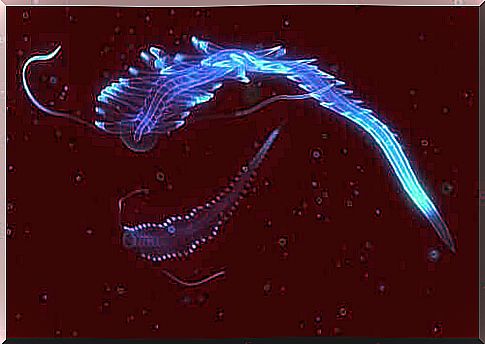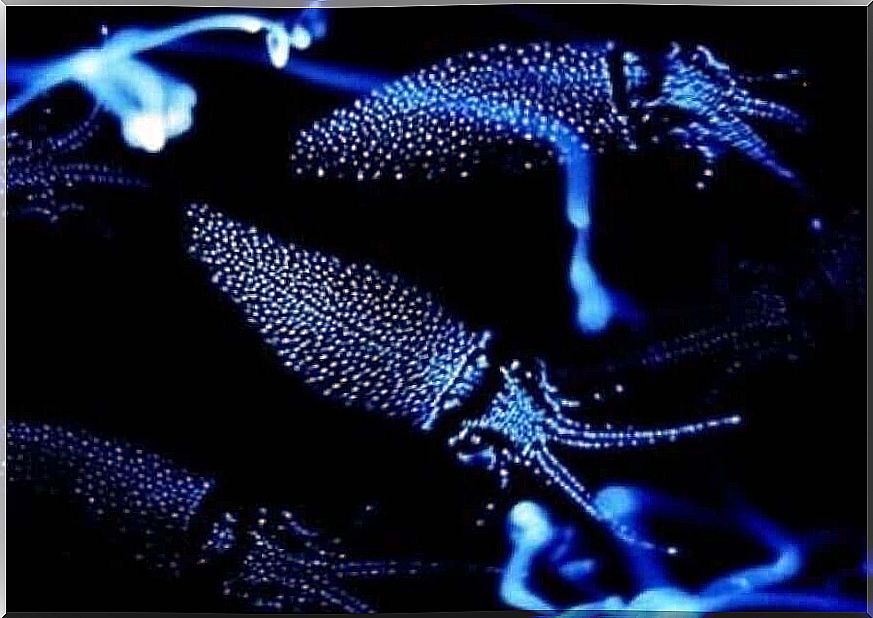What Is Bioluminescence?

Bioluminescence is the emission of light generated by some living beings in certain situations to ensure their survival. It is a light source considered a cold reaction, as it does not emit any type of heat.
This phenomenon, which seems almost magical, is very extended to all biological levels. It is present in insects and marine animals, such as fireflies, plankton, worms and squid, among others.
A high percentage of species that emit bioluminescence live in the sea, mainly at depths of more than 200 meters, places where solar radiation does not reach and total darkness reigns. In fact, 75% of animals in the deep depend on their ability to emit light.
Chemical process behind bioluminescence
The ability to produce light is believed to have evolved evolutionarily about 150 million years ago. From that moment on, some species – mainly marine ones – could produce light through a chemical reaction.

The details of that chemical reaction depend a lot on the species that carry it out. However, it can be summed up in the oxidation of luciferin, a protein that emits light when it comes in contact with oxygen and luciferase, a catalytic enzyme. The light emitted by fireflies is an example of this reaction between luciferin and luciferase.
Another type of chemical reaction that also allows some species to emit light is through ions, not enzymes. This allows the body to control the brightness of light to release more or less proteins, all controlled by the animals’ nervous system, in response to external factors.
Types of Bioluminescence
There are three main types of bioluminescence: intracellular, extracellular and that produced by the symbiotic relationship with bacteria.
The first is that in which the chemical reaction is produced entirely within the body of bioluminescent animals, through specialized cells. This type of bioluminescence is characteristic of many squids and dinoflagellates.

Extracellular bioluminescence occurs when the reaction between luciferase and luciferin takes place outside the bioluminescent organism. Both components are stored in different glands within or on the animal’s skin.
When light is needed, substances are secreted to make the chemical reaction. This type of bioluminescence is common in some abyssal crustaceans and cephalopods.
The bioluminescence that occurs through symbiosis with bacteria is the most widespread in the animal kingdom, especially in marine animals such as molluscs, echinoderms, fish and worms.
In various parts of the body of bioluminescent animals, there are small bladders, known as photophores, where luminescent bacteria are kept, which are activated or secreted when necessary.
Roles
Bioluminescence has a wide range of functions in the animal kingdom. All of them help bioluminescent species to survive, whether to reproduce, feed or defend themselves.
As a defense system, bioluminescence is extremely effective : the light produced is used to frighten or confuse predators. This is done by a set of flashes.
Some species release bioluminescent members from their bodies as a distraction technique to prevent vital organs from being attacked, as do Anomalopidae , the lanternfish family.

Some species use light emission to find a mate. Males use light signals to attract female interest, while females can respond to males with other light emissions.
This technique is used by fireflies to reproduce. Another case may be that the intensity of the emitted light brightness demonstrates the male’s virility potential.
Bioluminescence is also used as an offensive technique. The clearest example is species that use light as bait, because some fish are attracted to light and, when they are close enough, they are consumed.
Light can also be used by predators to see better under the sea.









